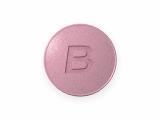Levlen is a combined monophasic oral hormonal contraceptive drug. When taken orally, it inhibits the pituitary secretion of gonadotropic hormones. The contraceptive effect is associated with several mechanisms. As a gestagenic component (progestin) it contains a derivative of 19-nortestosterone – levonorgestrel, which is superior in activity to the corpus luteum hormone progesterone (and a synthetic analog of the latter – pregnin), acts at the receptor level without preliminary metabolic transformations.
The estrogenic component is ethinyl estradiol. Under the influence of levonorgestrel, there is a blockade of the release of LH and FSH from the hypothalamus, inhibition of the secretion of gonadotropic hormones by the pituitary gland, which leads to inhibition of maturation and the release of an egg ready for fertilization (ovulation). The contraceptive effect is enhanced by ethinyl estradiol. It maintains a high viscosity of cervical mucus (makes it difficult for sperm to enter the uterine cavity). Along with the contraceptive effect, when taken regularly, it normalizes the menstrual cycle and helps prevent the development of a number of gynecological diseases, incl. tumor nature.
Indications
- Oral contraception;
- Functional disorders of the menstrual cycle (including dysmenorrhea without an organic cause, dysfunctional metrorrhagia);
- Premenstrual tension syndrome.
Method of administration and dosage
The drug is taken orally, without chewing and drinking a small amount of water. If during the previous menstrual cycle, 1 tablet is prescribed from the 1st day of menstruation daily for 21 days. This is followed by a 7-day break, during which menstrual bleeding occurs. The next 21-day cycle of taking pills from a new pack containing 21 tablets must be started the next day after the 7-day break, i.e. on the 8th day, even if the bleeding has not stopped. Thus, the beginning of taking the drug from each new package falls on the same day of the week.
Contraindications
- Severe liver disease;
- Congenital hyperbilirubinemia (Gilbert’s syndrome, Dubin-Johnson syndrome, Rotor syndrome);
- Cholecystitis;
- Severe cardiovascular and cerebrovascular diseases;
- Thromboembolism and predisposition to them;
- Malignant tumors (primarily breast or endometrial cancer);
- Liver tumors;
- Hyperlipidemia;
- Severe forms of arterial hypertension;
- Endocrine diseases (including severe forms of diabetes mellitus);
- Sickle cell anemia;
- Chronic hemolytic anemia;
- Vaginal bleeding of unknown etiology;
- Cystic drift;
- Migraine;
- Otosclerosis;
- A history of idiopathic jaundice of pregnant women;
- Aevere itching of pregnant women;
- Herpes of pregnant women;
- Age over 40;
- Pregnancy;
- Lactation period (breastfeeding);
- Hypersensitivity to the components of the drug;
- Impaired renal function;
- Varicose veins;
- Phlebitis;
- Otosclerosis;
- Multiple sclerosis;
- Chorea minor;
- Intermittent porphyria;
- Latent tetany;
- Bronchial asthma.
Application during pregnancy and lactation
The drug is contraindicated during pregnancy and lactation (breastfeeding).
Side effects
The drug is usually well tolerated. Possible side effects of a transient nature, spontaneously passing:
- nausea;
- vomiting;
- headache;
- tenderness of the mammary glands;
- changes in body weight and libido;
- mood changes;
- acyclic spotting;
- In some cases there can be found:
- eyelid edema;
- conjunctivitis;
- visual impairment;
- discomfort when wearing contact lenses (these phenomena are temporary and disappear after discontinuation without prescribing any therapy);
- Chloasma;
- hearing loss;
- generalized itching may very rarely occur with prolonged use;
- jaundice;
- cramps of the calf muscles, an increase in the frequency of epileptic seizures;
- rarely noted hypertriglyceridemia;
- hyperglycemia;
- decreased glucose tolerance;
- increased blood pressure;
- thrombosis and venous thromboembolism;
- jaundice;
- skin rash;
- changes in the nature of vaginal secretion;
- candidiasis;
- fatigue.
Overdose
Cases of toxic effects’ development due to overdose are unknown.
Interaction with other drugs
- Barbiturates, some antiepileptic drugs (carbamazepine, phenytoin), sulfonamides, pyrazolone derivatives can increase the metabolism of the steroid hormones that contained in the drug chloramphenicol, neomycin, polymyxin B, sulfonamides, tetracyclines), which is associated with a change in the intestinal microflora;
- Adrenergic blockers may increase their bioavailability and toxicity;
- When using oral hypoglycemic drugs and insulin, it may be necessary to change their dose;
- When combined with bromocriptine, its effectiveness decreases;
- When combined with drugs with a potential hepatotoxic effect, for example, with the drug dantrolene, an increase in hepatotoxicity is observed, especially in women over 35 years old.

